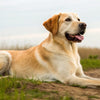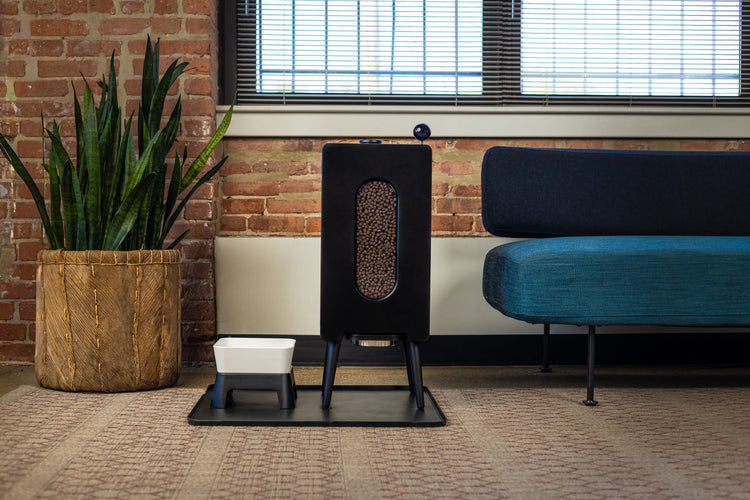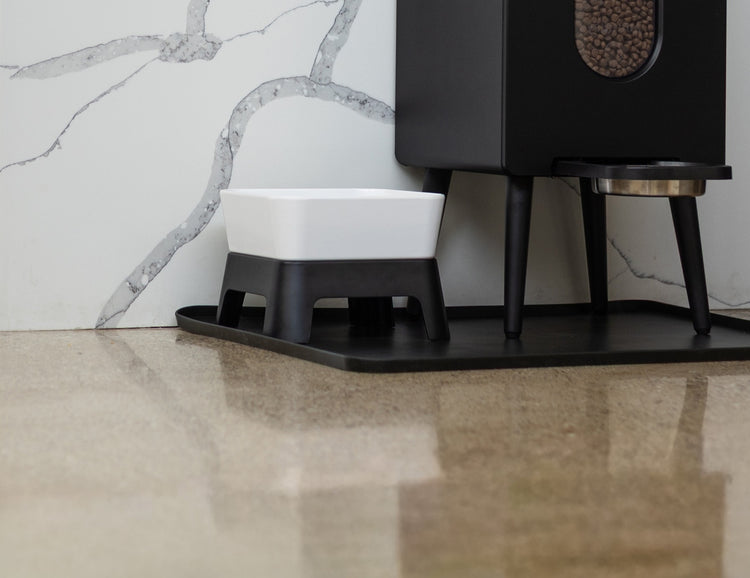How Long to Wait After Dog Eats to Exercise: The Essential Guide for Dog Owners
- Houndsy
Table of Contents
- Introduction
- Understanding Dog Digestion
- The Risk of Exercising Too Soon
- Recommended Waiting Times Before Exercise
- The Benefits of Timing Your Dog's Exercise
- Customizing Your Dog’s Feeding and Exercise Schedule
- What to Do if You Haven’t Waited Long Enough
- Conclusion
- FAQ
Introduction
As dog lovers, we often find ourselves asking questions about our furry friends' health and well-being. One common dilemma pet parents face is: How long should we wait after our dog eats before we exercise them? According to veterinarians, waiting at least two hours after a meal before engaging in vigorous activity is advisable. This precaution helps to prevent serious health issues like bloating and gastric dilatation-volvulus (GDV).
In this blog post, we will explore the intricacies of timing exercise after meals for dogs. We'll discuss the digestive process, the risks of exercising too soon, and the ideal feeding and exercise schedules for your pet. By the end of this article, you will have a comprehensive understanding of how to balance your dog's feeding and exercise routines for optimal health.
So, grab a treat for your pup, and let’s dive into the details of how to ensure your dog enjoys both their meals and exercise safely!
Understanding Dog Digestion
To grasp the importance of timing, we first need to understand how a dog’s digestive system functions. When your dog eats, the food travels through the esophagus to the stomach, where it is mixed with digestive juices. This process typically takes several hours, and the food then moves into the intestines for nutrient absorption.
The Digestive Timeline
- Small Meals: Digestion may take around 4-6 hours.
- Medium Meals: Expect digestion to take about 6-8 hours.
- Large Meals: This can extend to 8-10 hours for thorough digestion.
Understanding this timeline is crucial for determining when it is safe for your dog to exercise after eating.
The Risk of Exercising Too Soon
Engaging in physical activity immediately after a meal can lead to several health complications for dogs. The primary concerns are:
1. Bloating
Bloating occurs when the stomach fills with gas, food, or fluid. It can be uncomfortable and, in severe cases, life-threatening. This condition is particularly prevalent in deep-chested breeds like Great Danes and German Shepherds.
2. Gastric Dilatation-Volvulus (GDV)
GDV is a more severe form of bloating that involves the stomach twisting upon itself, cutting off blood flow and risking shock. This is a medical emergency that requires immediate veterinary attention. Symptoms include:
- Distended abdomen
- Excessive drooling
- Restlessness
- Rapid heart rate
3. Digestive Discomfort
Exercising too soon can interrupt the digestive process, leading to:
- Vomiting
- Abdominal pain
- Cramps
Recommended Waiting Times Before Exercise
To minimize the risks associated with exercising after meals, here’s a general guideline to follow:
- After a Small Snack: Wait at least 30 minutes.
- After a Small Meal: Wait for 1 hour.
- After a Medium to Large Meal: Wait for 2-3 hours.
These recommendations can vary based on your dog’s breed, age, and individual health needs.
The Benefits of Timing Your Dog's Exercise
Understanding the right timing for exercise can enhance your dog’s overall health and happiness. Here are a few key benefits:
1. Enhanced Digestion
Allowing time between eating and exercising gives your dog's digestive system the chance to process food effectively, reducing the risk of discomfort and digestive issues.
2. Improved Energy Management
By waiting to exercise, you allow your dog to harness the energy from their meal, contributing to more effective and enjoyable exercise sessions.
3. Reduced Health Risks
Following a structured feeding and exercise schedule helps minimize serious health risks, ensuring your dog stays safe and healthy.
Customizing Your Dog’s Feeding and Exercise Schedule
Understanding Your Dog’s Needs
Every dog is unique, and factors such as breed, age, health condition, and activity level will dictate their specific needs. Here’s how to tailor a schedule that works for your pup:
- Breed Considerations: Large breeds may require longer waiting times post-meal than smaller breeds due to their higher risk of GDV.
- Age Factor: Puppies and older dogs may need different routines. Puppies can often eat and play within shorter timeframes, while older dogs may need more time to digest.
- Health Issues: Dogs with pre-existing health conditions should have their feeding and exercise schedules discussed with a veterinarian.
Example Feeding and Exercise Schedule
-
Morning:
- 8:00 AM: Feed a small meal (30 minutes before a walk)
- 8:30 AM: Gentle walk for 15-20 minutes
-
Midday:
- 12:00 PM: Feed a medium meal (wait 2 hours for exercise)
-
Evening:
- 6:00 PM: Feed a large meal (wait 2-3 hours before vigorous play)
What to Do if You Haven’t Waited Long Enough
If you find yourself in a situation where you need to take your dog out shortly after eating, consider these tips:
- Take a Short, Leisurely Walk: Avoid vigorous exercise; a calm stroll is less likely to cause issues.
- Monitor for Signs of Discomfort: Keep an eye on your dog for any signs of bloating or distress during and after the walk.
- Consult Your Vet: If your dog shows any unusual symptoms, don’t hesitate to contact your veterinarian.
Conclusion
Understanding how long to wait after your dog eats before exercising is essential for their health and well-being. By following the recommended guidelines and tailoring routines to your dog’s specific needs, you can help ensure they remain happy and healthy.
As dog owners, we want to provide the best care possible, which includes optimizing feeding and exercise schedules. If you’re looking for ways to elevate your dog’s feeding experience, consider checking out the Houndsy Kibble Dispenser. With its innovative design, it not only simplifies the feeding process but also enhances your dog’s dining experience.
FAQ
How can I tell if my dog is experiencing bloat?
Look out for symptoms such as a distended abdomen, excessive drooling, restlessness, and rapid heart rate. If you notice these signs, seek veterinary attention immediately.
Is it safe to walk my dog before they eat?
Walking your dog before meals can help stimulate their appetite, but it’s essential to observe their energy levels and ensure they are not overly active, especially if they are prone to low blood sugar.
What should I do if my dog is still hungry after walking?
If your dog seems hungry after a walk, ensure they are receiving enough food during their meals. Adjust portion sizes based on their activity levels, but avoid feeding immediately after exercise.
Can I use the Houndsy Kibble Dispenser for treats?
Yes! The Houndsy Kibble Dispenser can be utilized for treats as well, making it a versatile addition to your pet care routine. It can help maintain portion control while keeping feeding convenient.
How can I create a consistent feeding schedule for my dog?
Establish regular feeding times that align with your daily routine. Monitor your dog’s energy levels and adjust meal sizes to match their activity needs, ensuring they have adequate time to digest before exercising.
By prioritizing your dog’s health and safety, you not only enhance their quality of life but also create a stronger bond through mutual care and understanding. Happy feeding and walking!












